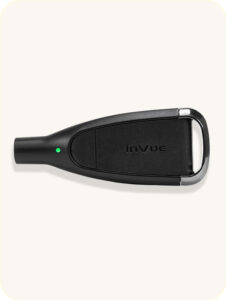Retail Theft Tactics Revealed: The Internal and External Threats You Didn’t Know

Retail theft isn’t limited to dramatic break-ins or sneaky shoplifting. It encompasses a wide range of tactics, including both employee and shoplifting perpetrated by customers. Despite increasing loss prevention budgets, many retailers are still facing store closures and price hikes.
While locking up merchandise and increasing security guards are common measures, effectively protecting your store requires a deeper understanding of the various theft methods. In this blog, we’ll explore the two main categories of retail theft tactics—internal and external—and delve into the specific types under each category, and some smart technology you can use to combat the more common types of theft.
The Broad Spectrum of Retail Theft
Retail theft can be broadly categorized into two main types: internal theft, committed by employees, and external theft, carried out by customers or outsiders. Both categories have specific “subcategories” to become familiar with.
External Theft
- Opportunistic Shoplifting: This is often a spur-of-the-moment decision where a customer steals low-value items without premeditation.
- Planned Shoplifting: Here, theft is carefully planned, sometimes involving sophisticated techniques to avoid detection.
- Concealment: Items are hidden in bags or clothing to avoid being noticed.
- Under-Dressing: Concealing merchandise on one’s body or clothing.
- Professional Theft Rings: These groups conduct systematic thefts across multiple stores, often targeting high-value items with advanced methods.
- Smash-and-Grab: This involves breaking windows or doors to quickly steal merchandise.
- Fraudulent Returns: Using stolen or counterfeit items to obtain cash or store credit fraudulently.
- False Deliveries: Vendors deliver fewer items than invoiced and pocket the difference.
- Overcharging: Inflating charges for items or services, sometimes in collusion with store employees.
- Price Switching: Altering price tags to pay less for more expensive items.
- Coupon Fraud: Using counterfeit or expired coupons to gain unauthorized discounts.
Internal Theft

- Direct Theft: Stealing cash directly from the register.
- No-Sale Transactions: Employees skip ringing up items to pocket the money.

- Employee Shoplifting: Taking merchandise directly from the store.
- Manipulated Inventory Records: Falsifying inventory records to conceal theft or errors.
- Theft via “Sweethearting”: Providing free items or discounts to friends or family.
- Buddy Punching: One employee clocks in or out for another, resulting in fraudulent wage payments.
- Falsified Hours: Reporting hours that weren’t worked or inflating hours worked.
- Sensitive Information Theft: Stealing customer or company data, such as credit card information.
- Cyber Theft: Hacking into digital systems to access information or funds unlawfully.
- Collusion with Vendors: Employees and vendors work together to defraud the store through fake deliveries or inflated invoices.
- Unapproved Discounts: Offering unauthorized discounts or services to acquaintances.
- Time Theft: Using company resources for personal gain without permission.
- Reselling Stolen Items: Employees stealing items with the intent to resell them elsewhere.
- Sabotage: Damaging products to create opportunities for theft or fraud.
- Altered Sales Records: Changing sales data to cover up theft or misappropriation of funds.
- Fraudulent Returns: Processing returns for stolen or fake items to receive cash or store credit.
Effective Strategies to Prevent Theft
Addressing both internal and external theft effectively requires a blend of policies, training, and technology. Here are some strategies to help reduce theft risks: 1
Before hiring, perform detailed background checks to identify potential risks. This step helps mitigate the chance of hiring individuals who might pose a higher risk for theft.
Use access control systems to regulate which areas employees can access. Limiting access to sensitive areas reduces opportunities for theft.
Ensure that all employees are well-versed in the store’s policies on theft and understand the consequences of dishonest behavior. Training should also cover how to handle situations involving theft and recognize warning signs.
Develop clear policies regarding theft, including detailed procedures and penalties for violations. Consistent enforcement of these policies is essential.
Create an environment where honesty and integrity are valued. Recognize and reward employees who exhibit positive behavior and contribute to a supportive work environment. A positive culture can deter theft and improve overall morale.
Conduct regular audits of financial records and inventory. Implement surveillance systems to monitor employee activities in sensitive areas. Regular monitoring helps deter theft and quickly identify any issues.
Incorporate modern technology such as smart locks to enhance security and prevent both internal and external theft.
8. Smart Locks
Smart locks offer advanced security features compared to traditional mechanical locks. They come in two main types:

- OneKEY Locks: These locks use a proprietary single-key system, allowing store owners to set permissions for different employees. They also feature time-out functions to deactivate lost or stolen keys and provide an audit trail of who accessed which areas.

- LIVE Locks: Ideal for stores with existing mobile or handheld devices, LIVE Locks integrate with current technology. Employees use store-issued or personal mobile devices for access, streamlining operations while maintaining security. Like OneKEY Locks, they provide detailed access records. LIVE Locks also utilize OneKEY for back-up. Or the alternative to start with OneKEY and later move to using mobile access when it is right for your store—without having to invest in new locks.
Addressing the Ongoing Challenge of Theft
Before you consider closing your retail store, consider a strategic approach to loss prevention by combining effective policies, employee training, and cutting-edge technology. Understanding the nuances of both internal and external theft is essential in crafting a comprehensive security plan.
To strengthen your theft prevention strategies and secure your merchandise, consider integrating smart lock solutions into your store. Contact InVue today to discover how our advanced smart lock systems can provide tailored protection and enhance your store’s security. Let us help you create a safer, more efficient retail environment.